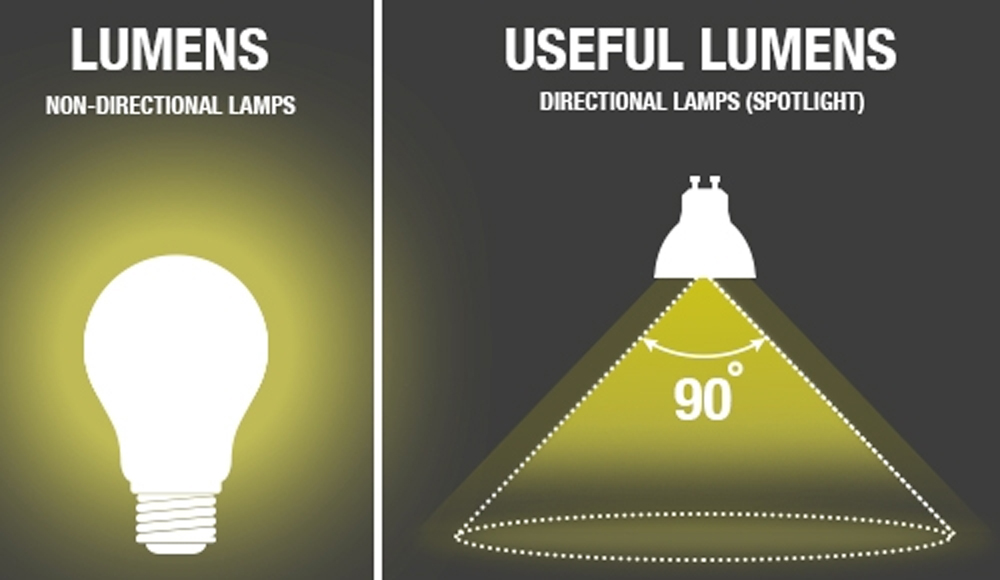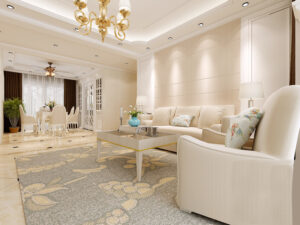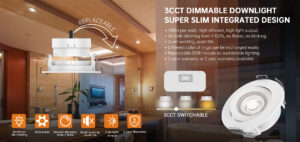Choosing the right lighting involves more than just style. Understanding how to judge downlights and track lights by their lumen value helps you find the perfect balance of brightness, energy efficiency, and atmosphere. Lumens measure the total visible light a fixture emits, making them the best brightness indicator. This article explains how to evaluate downlights and track lights by lumen value, guiding you to make smart lighting choices in 2025 and beyond.
Understanding lumens and their importance in lighting
Lumens (lm) measure the total visible light from a lamp or fixture. Unlike watts, which show energy use, lumens tell you how bright the light is. For example, a 100-watt incandescent bulb produces about 1,500 to 1,700 lumens. LED technology has shifted focus from watts to lumens because LEDs produce more light per watt, making them more energy-efficient.
Knowing lumens helps you understand how bright a light will be in your space. Higher lumen values mean brighter light, but the ideal amount depends on room size, ceiling height, and lighting use. Kitchens and bathrooms need more lumens for tasks, while living rooms and bedrooms benefit from softer, ambient light.
Difference between lumen and useful lumen
What is lumen
Lumen measures the total light a source emits in all directions. When a bulb says it has 1,000 lumens, it means it emits 1,000 lumens everywhere, not just where you want light. This total light includes what shines on walls, ceilings, or floors.What is useful lumen
Useful lumen is the part of the total lumens that actually lights the area you want. It accounts for beam angle and fixture design. For example, a downlight’s useful lumens are those that fall on your desk or floor, not wasted on the ceiling or walls.Why useful lumen matters more
Useful lumen shows how much light a fixture delivers where it is needed. A light with high total lumens but poor design wastes light and energy. Focusing on useful lumens helps you get the brightness you want with less power, saving energy and reducing environmental impact. The European Union’s ERP regulations require manufacturers to report useful lumen values. This ensures products deliver effective light, reduce waste, and lower carbon emissions. Learn more about ERP lighting requirements.Example of useful lumen importance
An omnidirectional bulb emits 1,000 lumens in all directions, but only 400 lumens may light your desk. A focused LED downlight with 800 lumens can send 700 lumens directly to your workspace, making it appear brighter and more efficient.| Metric | Definition | Importance |
|---|---|---|
| Lumen | Total light emitted in all directions | Shows output but not real effectiveness |
| Useful lumen | Light that effectively illuminates target | Reflects actual usable light and efficiency |
What’s Luminous efficacy
What is luminous efficacy
Luminous efficacy measures how well a light source converts electricity into visible light. It is lumens per watt (lm/W). Higher efficacy means more light for less energy, saving electricity and reducing costs. Incandescent bulbs have about 16 lm/W, while modern LEDs reach 150 lm/W or more. This means LEDs produce much more light for the same power, lowering energy use and environmental impact. Luminous efficacy also reflects fixture design quality, including LED chips, optics, and heat management. High efficacy means less heat, longer lifespan, and less maintenance.Useful lumens and energy efficiency
Useful lumens focus on light that actually illuminates the intended area. This reduces wasted light and energy. For example, a spotlight with a narrow beam uses fewer lumens to light a surface than a bulb shining light everywhere. This concept matches the EU’s ERP regulations, which emphasize real-world lighting efficiency, pushing manufacturers to improve beam control and optics.ERP regulations and lighting standards
The European Ecodesign Directive (ERP) sets minimum energy and efficiency standards for lighting. Since 2021, it requires:- Minimum luminous efficacy (lm/W) for lamps and fixtures.
- Better optical design to maximize useful lumens.
- Limits on energy consumption based on effective light output.
| Concept | Definition | Environmental Impact | ERP Focus |
|---|---|---|---|
| Luminous efficacy | Lumens per watt (lm/W) | Saves energy, reduces emissions | Sets minimum efficiency standards |
| Useful lumens | Light effectively used in target area | Reduces wasted light and energy | Encourages optimized design and beam control |
| Environmental impact | Less energy use lowers carbon footprint | Extends lifespan and reduces waste | Supports EU energy and sustainability goals |
Judging downlights by lumen value
Downlights are recessed fixtures used for general or accent lighting. To judge their brightness by lumen value, consider:- Room size and use: Multiply room square footage by recommended foot-candle level (light intensity per square foot). For example, a 100 sq ft living room at 20 foot-candles needs 2,000 lumens total.
- Beam angle: Downlights have beam angles from 25° to 60°. Narrow beams focus light for tasks, while wider beams provide ambient lighting.
- Energy efficiency: Look for lumens per watt (lm/W). Modern LEDs deliver 100-150 lm/W, saving energy.
- Color rendering index (CRI): CRI above 80 ensures colors look natural, important in living spaces and retail.
Typical lumen recommendations for downlights
| Room Type | Lumens per Fixture | Notes |
|---|---|---|
| Living Room | 600 – 800 lm | Softer light, wider beam |
| Kitchen | 800 – 1,200 lm | Task lighting, narrower beam |
| Bathroom | 800 – 1,000 lm | Bright, focused lighting |
| Hallway | 400 – 600 lm | Ambient lighting |
Judging track lights by lumen value
Track lights are adjustable fixtures used for accent, task, or general lighting. To judge them by lumen value, consider:- Lumen output: Track lights range from 300 lm for accents to 2,000+ lm for tasks. Choose based on area size and use.
- Beam angle: Narrow beams (15-30°) spotlight details; wider beams (60°+) light larger areas.
- Color temperature: From warm white (2700K) to cool white (5000K+), affecting mood and function.
- Energy efficiency and dimming: Evaluate lm/W and dimming options for flexibility and savings.
Typical lumen ranges for track lights
| Application | Lumen Range | Beam Angle | Notes |
|---|---|---|---|
| Accent lighting | 300 – 600 lm | 15° – 30° | Highlight art or objects |
| Task lighting | 800 – 1,500 lm | 30° – 60° | Focused work areas |
| General lighting | 1,200 – 2,000+ lm | 60° – 120° | Broad room illumination |
Introducing Radians Lighting
Radians Lighting is a top manufacturer of LED downlights and track lights for the European market. They focus on customization, innovative design, and strict quality control to deliver high-performance, durable products with high lumen output.
Their product range includes 6W LED Downlights, Dimmable Downlights, and COB Downlights. For track lighting, they offer Adjustable Track Lighting and Dimmable Track Lighting.
Radians Lighting aligns with EU energy and environmental standards, providing efficient products that save energy and reduce costs. Their solutions meet the needs of customers in Germany, the UK, France, Scandinavia, and beyond.
Comparing downlights and track lights by lumen value
| Feature | Downlights | Track Lights |
|---|---|---|
| Lumen Output | 400 – 1,200 lm per fixture | 300 – 2,000+ lm per fixture |
| Beam Angle Range | 25° – 60° | 15° – 120° |
| Applications | General and accent lighting | Accent, task, general lighting |
| Energy Efficiency | High (100-150 lm/W) | High (similar efficiency) |
| Flexibility | Fixed recessed installation | Adjustable on track |
| Best For | Ambient, kitchens, bathrooms | Highlighting, retail, tasks |
Conclusion
Judging downlights and track lights by lumen value ensures your space is lit properly. Lumens measure brightness, helping you select fixtures that fit room size, function, and mood. Downlights offer recessed, focused lighting, while track lights provide flexible, adjustable illumination.
Understanding luminous efficacy and useful lumens links brightness to energy savings and environmental care. These metrics are vital under European ERP regulations, promoting sustainable lighting that reduces energy use and emissions.
Radians Lighting leads in providing customizable, efficient LED downlights and track lights that meet European standards. By applying lumen knowledge and calculations, you can create well-lit, comfortable spaces that look great and save energy.
Explore Radians Lighting’s full range of LED downlights and track lighting for expert solutions.








